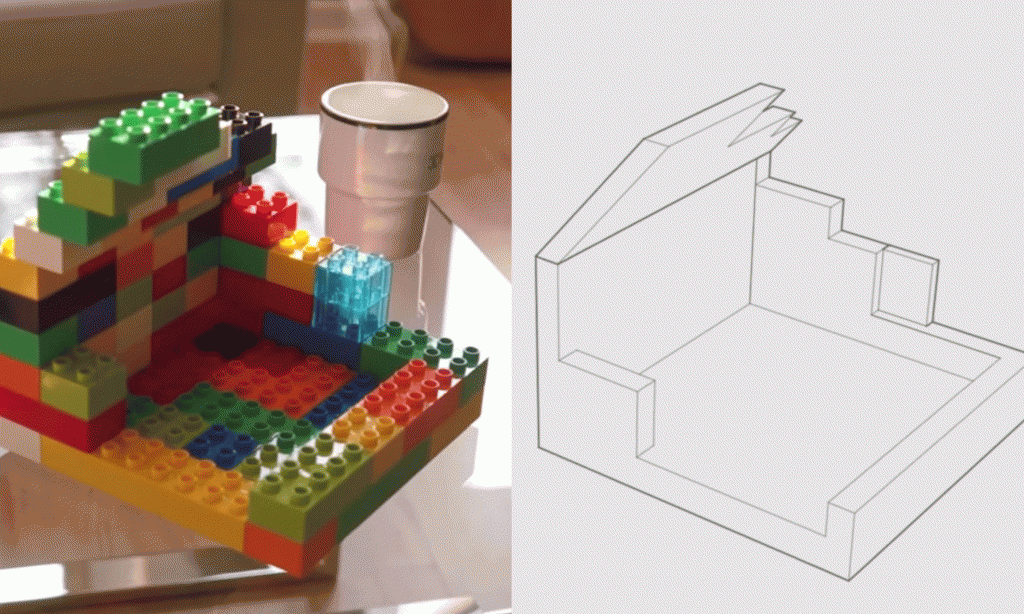A London-based sketch and modelling studio has found a way to turn Lego blocks into a digital modelling kit, potentially redefining the way buildings are designed.
The studio, known as Gravity, has developed a prototype known as the Lego X system, which allows users to transform forms created with Lego blocks into digital files.
The system recognises the position of toy building blocks through the use of location-mapping and gyroscopic sensors that plot the position and orientation of each of the components, creating a digital 3D model in real time.
“[Lego X] is a network of bricks that communicate through an app made in-house,” Oluwaseyi Sosanya from the Gravity team told Dezeen magazine.
“You have your bricks and you start building with them; the system understands the shapes being built and lets you control certain parameters to modify the shape for use when finished building.”
VIDEO: ‘Lego land’ designs go digital with 3D app
The app will allow users to store the digital models and export the 3D files to use as desired, including for 3D printing.
Although the proof of concept showcased in the YouTube video uses larger Duplo blocks, the team at Gravity have said that the platform will be developed to work with smaller, more intricate Lego pieces.
“The next iteration would be integrated into the standard Lego-size bricks,” said Sosanya. “This is why we call it Lego X,” he pointed out.
When paired with the Lego Architecture Studio Kit, a set of building bricks designed specifically for architects, the system developed by Gravity could provide a new tool for building design and planning.
With each block modelled individually within the interface, users can move, turn and connect physical objects by hand – while it’s mirrored in real time on the screen.
Once large clusters of blocks are formed, they will act as single entities within the programme, thereby making it easier to create complicated forms. The digital model can be programmed to stay at one orientation while the physical structure is being built. It can then been rotated and viewed from different angles within the app or by handling the blocks.
VIDEO: ‘Lego land’ designs go digital with 3D app
In addition, the software will be able to create more realistic architectural structures by calculating when a user is building an angled section and consequently creating a sloping plane on the screen, rather than a staggered portion.
Files can also be smoothed to remove the joints between the bricks and rounded to make edges and junctions between shapes appear curved.
Gravity was formed by four Royal College of Arts and Imperial College London students. The studio developed the technology while working on augmented reality software for turning 2D drawings into 3D models.
A similar system to Lego X has been developed by designers Unfold, Kirschner3D and Penny Webb, who have created a set of instruments that measure physical objects and transfer the dimensions to a digital model.

